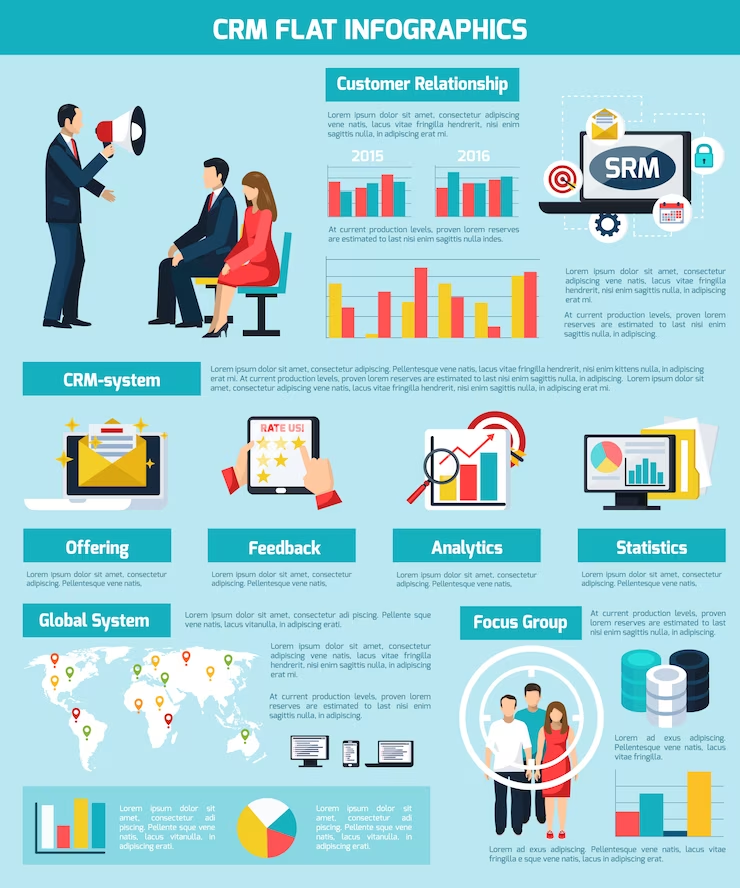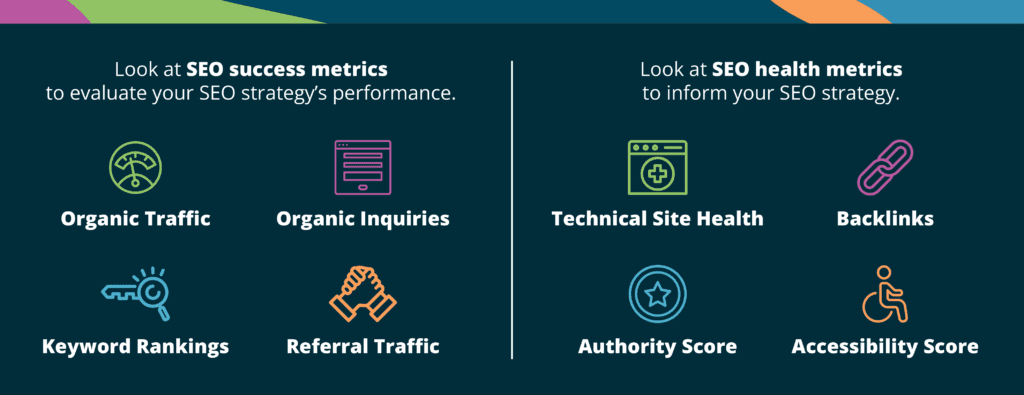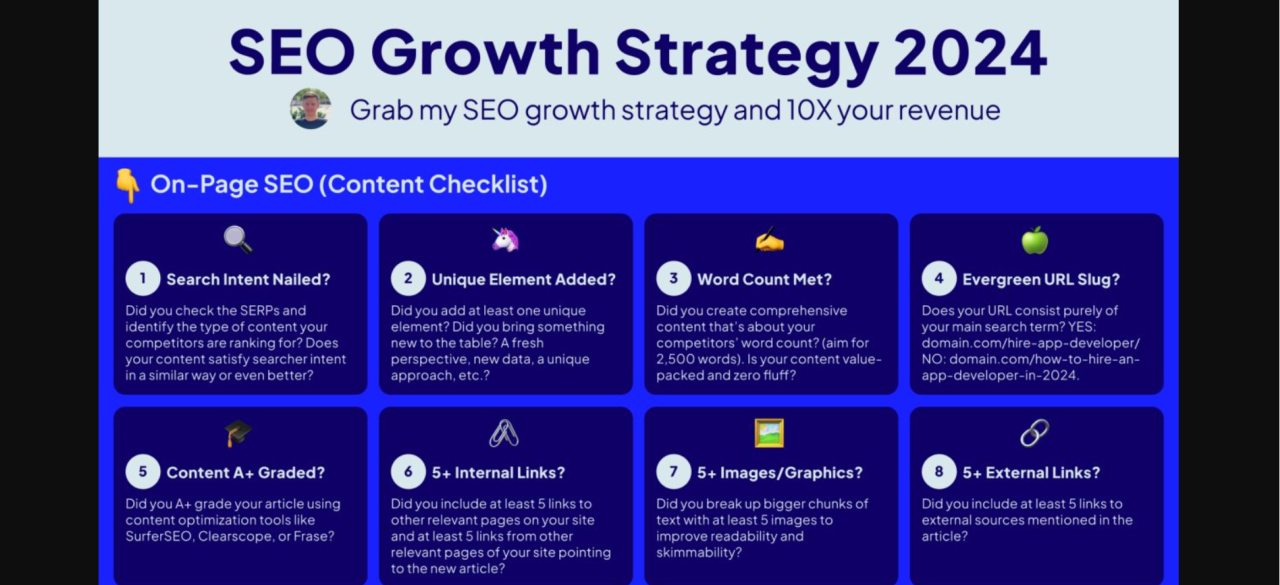Uncover the secret to measuring SEO success like a pro with these powerful tracking strategies that guarantee results!

Image courtesy of via DALL-E 3
Table of Contents
Introduction: What is SEO?
Search Engine Optimization, commonly known as SEO, is a way to improve a website’s visibility on search engines like Google. Imagine your favorite book in a library; you want it to be easy to find, right? SEO is like organizing that book in a way that makes it stand out on the library shelf so that everyone can spot it quickly.
Why SEO is Important
SEO is crucial because it helps website owners attract more visitors. Just like having a big sign outside a shop draws in customers, SEO makes a website more attractive and easier to discover online. The easier it is for people to find a website, the more likely they are to visit and see what it has to offer.
Basic Components of SEO
SEO involves various elements like keywords, high-quality content, and backlinks. Keywords are like the secret words people type into search engines to find what they’re looking for. Quality content means having interesting and useful information on a website. Backlinks are like thumbs up from other websites, showing that your website is trustworthy and worth visiting.
Setting SEO Goals
Setting SEO goals is crucial for tracking success and ensuring that your efforts to improve website visibility on search engines are working effectively. By establishing clear objectives, you can measure progress, make adjustments, and ultimately achieve better results.
Types of SEO Goals
There are various types of SEO goals that you can set to improve your website’s performance:
1. Increasing Website Traffic: By setting a goal to increase the number of visitors to your site, you can measure the effectiveness of your SEO strategies in attracting more users.
2. Improving Search Ranking: Setting a goal to improve your website’s position in search engine results pages (SERPs) can help boost visibility and attract more organic traffic.
3. Boosting User Engagement: Setting a goal to enhance user engagement metrics like time on site, bounce rate, and pages per session can lead to higher interaction and conversion rates.
How to Set Realistic Goals
When setting SEO goals, it’s essential to make them achievable and measurable. Here are some tips to help you set realistic objectives:
1. Define Specific Objectives: Clearly outline what you aim to achieve, whether it’s increasing traffic by a certain percentage or reaching a specific search ranking position.
2. Set a Timeline: Establish a timeframe for achieving your goals, whether it’s weekly, monthly, or quarterly, to keep track of progress and stay motivated.
3. Measure Progress: Use tools like Google Analytics to monitor key performance indicators (KPIs) and track how your website is performing in relation to your goals.
By setting realistic and measurable SEO goals, you can stay focused, monitor progress effectively, and adjust your strategies as needed to improve website visibility and drive more traffic.
Keyword Research
In the world of websites and search engines, finding the right words is key to success. This process is called keyword research. Think of keywords as the secret codes that help people discover your website when they search online.

Image courtesy of via Google Images
Tools for Keyword Research
There are handy tools that can help you uncover the most popular search terms related to your topic. These tools will show you what words people are typing into search engines, so you can use them in your website content to attract more visitors.
Choosing the Best Keywords
Not all keywords are created equal. It’s important to pick the most relevant and helpful keywords for your website. By selecting the right keywords, you can increase the chances of your website appearing at the top of search results when someone searches for that particular topic.
Tracking Website Traffic
Website traffic refers to the number of people who visit a website. Tracking website traffic is important because it helps website owners understand how popular their site is and where their visitors are coming from.
Using Google Analytics
Google Analytics is a tool that helps website owners track their website traffic. It provides valuable information such as the number of visitors, the pages they visit, and how long they stay on the site. By using Google Analytics, website owners can gain insights into their audience and make informed decisions to improve their website.
Understanding Traffic Sources
There are different sources of website traffic. Some visitors may find the website through organic search results on search engines like Google. Others may directly type the website’s URL into their browser, leading to direct visits. Additionally, visitors can come from referral links on other websites. Understanding these traffic sources can help website owners tailor their marketing strategies to reach their target audience effectively.
Monitoring Search Engine Rankings
Have you ever wondered how websites appear at the top of search engine results when you type in a question or topic? Well, it’s all about search engine rankings! Let’s dive into how you can keep an eye on where your website shows up in search results.

Image courtesy of via Google Images
Tools for Checking Rankings
There are special tools available that can help you see where your website ranks on search engines like Google. These tools can give you valuable information on the position your pages hold in the search results. Some popular tools include SEMrush, Ahrefs, and Moz Rank Tracker.
Interpreting Ranking Data
When you check your website’s ranking, you might notice some changes. If your website moves up in the rankings, it means more people will likely find your website when they search for related topics. However, if your website moves down, it might be a sign to revisit your SEO strategies to improve your ranking position.
Analyzing Backlinks
Backlinks play a crucial role in improving a website’s search engine ranking. But what exactly are backlinks, and how can you analyze them to enhance your SEO strategy?
What are Backlinks?
Backlinks are links from other websites that direct users to your website. Think of them as votes of confidence for your site. When reputable websites link to yours, search engines see your site as more trustworthy and authoritative, which can boost your ranking in search results.
Tools to Track Backlinks
To monitor and analyze your backlinks, you can use tools like Ahrefs, Moz Link Explorer, or SEMrush. These tools provide valuable insights into the quality and quantity of your backlinks, helping you understand which sites are linking to you and how those links are impacting your SEO efforts.
Assessing User Engagement
Exploring how users interact with your website is essential to understanding its effectiveness. User engagement refers to how actively users are interacting with the content on your site. By measuring key metrics, you can gain insights into how engaging your website is for visitors.

Image courtesy of via Google Images
Key Engagement Metrics
When assessing user engagement, there are several important metrics to consider:
- Bounce Rate: This metric measures the percentage of visitors who navigate away from your site after viewing only one page. A high bounce rate can indicate that the content or user experience may need improvement.
- Average Session Duration: This metric tracks the average amount of time visitors spend on your site during a single session. A longer average session duration suggests that visitors are finding your content engaging.
- Pages Per Session: This metric indicates the average number of pages viewed by visitors during a single session. A higher pages per session value can demonstrate that visitors are exploring your site thoroughly.
Improving User Engagement
To enhance user engagement on your website, consider implementing the following strategies:
- High-Quality Content: Ensure that your content is engaging, informative, and tailored to your target audience’s interests.
- Clear Navigation: Make it easy for users to find what they are looking for on your site by optimizing navigation menus and search functionality.
- Visual Appeal: Use visually appealing images, videos, and graphics to enhance the user experience and capture visitors’ attention.
- Interactive Elements: Incorporate interactive elements such as quizzes, polls, and feedback forms to encourage user participation and interaction.
- Mobile Responsiveness: Ensure that your website is optimized for mobile devices to provide a seamless user experience across all platforms.
By continuously monitoring user engagement metrics and implementing strategies to improve interaction on your website, you can create a more engaging and user-friendly experience for visitors.
Creating Reports
When you are working on improving your website’s visibility through SEO, it’s essential to track your progress to see what is working well and what needs improvement. One way to do this is by creating reports that summarize your SEO efforts. Reports can help you understand how well your strategies are performing and identify areas where you can make adjustments.
What to Include in an SEO Report
An SEO report should include key performance metrics that give you a clear picture of how your website is doing. Some elements to include in your report are:
- Traffic data: This tells you how many people are visiting your website.
- Ranking changes: Keep track of how your website is ranking on search engines like Google.
- Backlink information: Monitor the websites that are linking back to your site.
Using Reports to Improve
Once you have created your SEO report, it’s important to analyze the data and use it to make informed decisions about your SEO strategy. If you notice that certain keywords are driving a lot of traffic to your site, you may want to focus more on those keywords in your content. If you see that your website’s ranking is dropping, you can adjust your SEO tactics to try to improve it.
Reports are valuable tools to help you see what is working and what isn’t in your SEO efforts. By regularly creating and analyzing reports, you can continuously fine-tune your strategy to achieve better results over time.
Conclusion: Keeping Up with SEO
In conclusion, it is essential to highlight the significance of continuously tracking SEO performance and staying abreast of the latest SEO trends to ensure the success of a website.

Image courtesy of via Google Images
Regular Review and Updates
Regularly reviewing and updating SEO strategies is crucial to maintaining and improving a website’s visibility and ranking on search engines. By consistently monitoring the performance metrics and making necessary adjustments, website owners can adapt to changes in search engine algorithms and user behavior, ultimately enhancing their online presence.
Staying Informed
To stay informed about new SEO trends and best practices, website owners can keep up with industry news, attend webinars and conferences, and follow reputable SEO experts on social media platforms. By staying abreast of the latest developments in SEO, website owners can implement innovative strategies to outperform competitors and reach a wider audience.
Frequently Asked Questions (FAQs)
What Does SEO Stand For?
SEO stands for Search Engine Optimization. It is a way to help websites show up better on search engines.
How Do I Know if My SEO is Working?
You can tell if your SEO is working by checking if your website is getting more visitors or is ranking higher on search engines.







